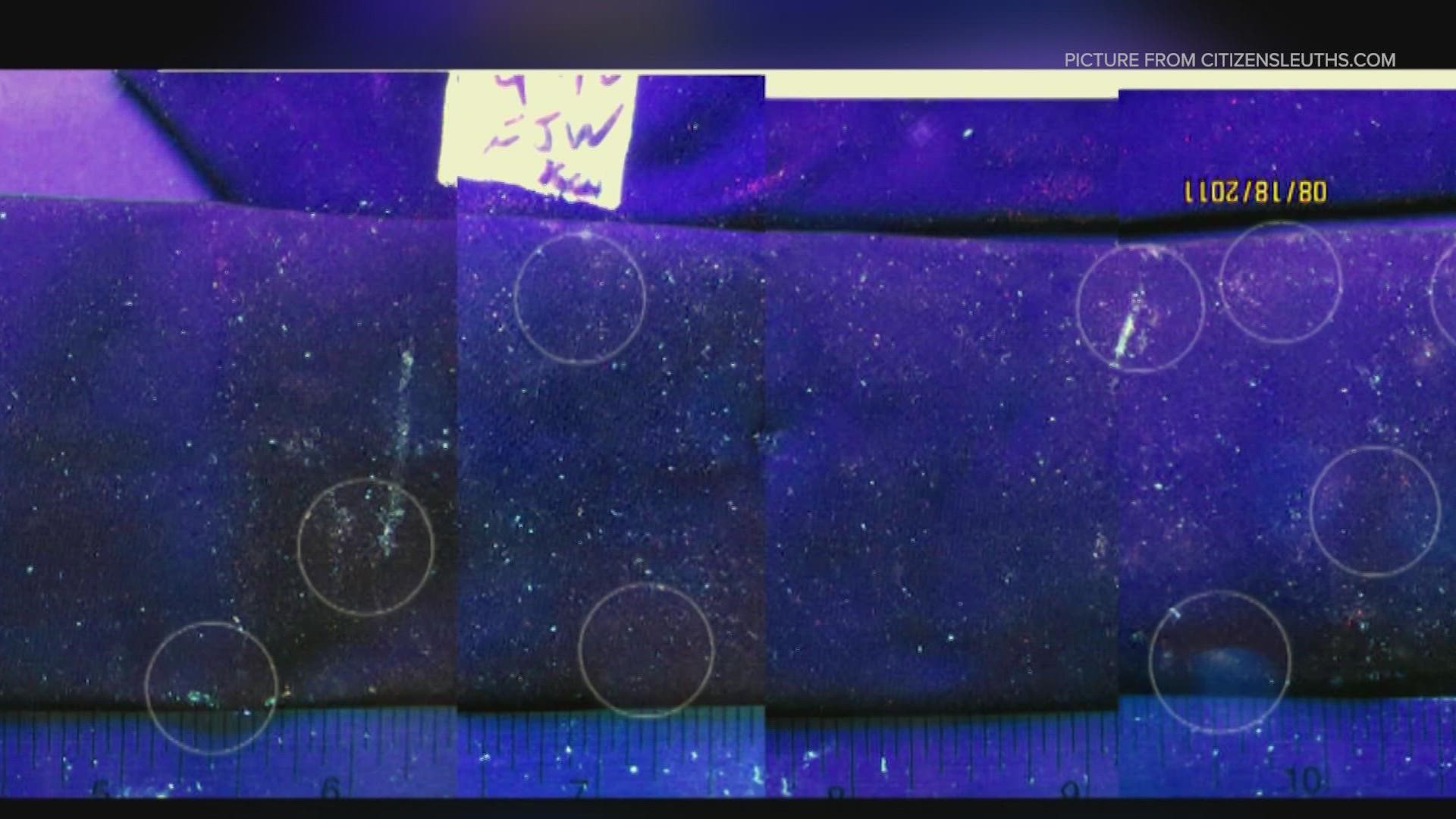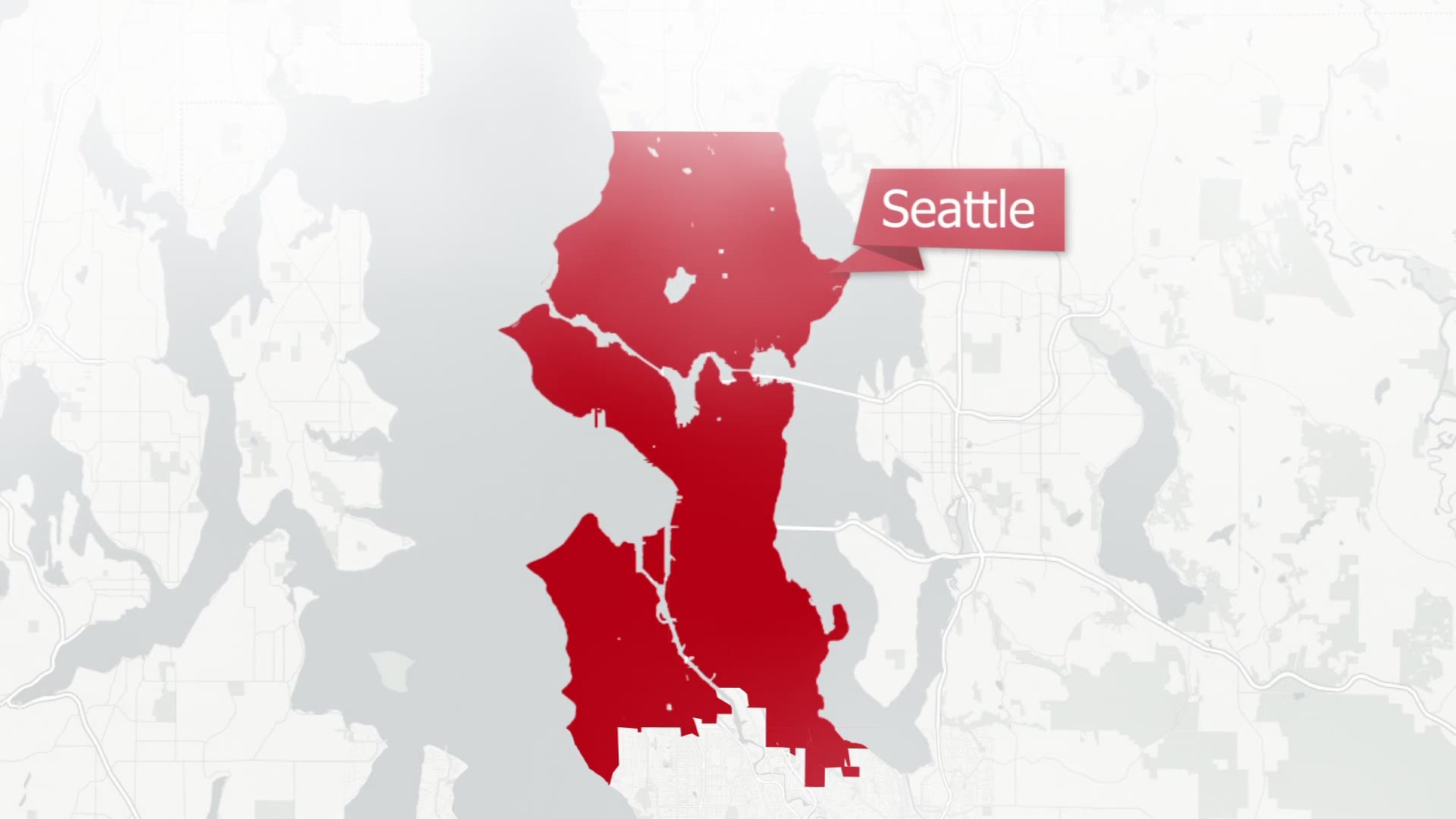SEATTLE — Three particles lifted off the necktie of D.B. Cooper are providing an intriguing, new clue in the unsolved 50-year-old skyjacking.
An amateur sleuth believes that the microscopic metals are telltale evidence of the skyjacker’s employer at the time he jumped from the Boeing 727 airliner over the Pacific Northwest on November 24, 1971.
It’s a clue that could lead right to the identity of Cooper himself.
“I believe that we have identified not only the company where D.B. Cooper came from, but also the specific division within the company that D.B. Cooper came from,” said Eric Ulis of Arizona, who has hunted the skyjacker for 14 years.
Ulis’ evidence comes from a scientific report that was produced 10 years ago by a team that the FBI invited to analyze evidence in the cold case. That team, headed by researcher Tom Kaye, lifted more than 100,000 particles off DB Cooper’s necktie. The skyjacker is believed to have discarded the tie on seat 18-E of the aircraft before he leapt from the Northwest Orient Airlines jet with parachutes and $200,000 ransom.
Ulis noticed in lab reports that among the tens of thousands of particles on Cooper’s tie were three specks of an alloy made of titanium and antimony, both earth elements. When he researched this alloy, he found that a Pennsylvania metals manufacturer applied for a patent to produce a titanium-antimony alloy in 1957.
“I've been looking for something that I would call a tantamount to commercial DNA, the idea being that just as human DNA points to a specific individual commercial DNA close to a specific company, and indeed, I actually found three particles of a very unique and very rare alloy,” said Ulis.
Records show that a company called Rem-Cru, based in Midland, Pennsylvania manufactured titanium-antimony. In follow-up research and interviews, Ulis said he learned the company never actually sold the product to the aerospace industry. He believes that because it had such limited distribution, the titanium antimony on Cooper’s tie is strong evidence that the skyjacker worked at Rem-Cru at some point.
“I have managed to isolate one person in particular, one person of interest in particular that I'm looking into, that appears to check several of the boxes. I'm not releasing the person's name publicly, for obvious reasons. But I'm going to continue to look into him,” Ulis said.
The assets of Rem-cru, which no longer exists, was sold to larger companies throughout the decades. Ulis has been in touch with Pennsylvania-based Allegheny Technologies and other firms that now own those assets and that may have historical information.
Kaye’s team found titanium and other rare particles on Cooper’s tie, leading to their theory several years ago that Cooper may have worked for Boeing or one of its contractors. But Ulis is the first to link particles to a specific company.
Rem-Cru was a cutting-edge metals manufacturer in the 1950’s and 1960’s that was competing for government contracts to produce parts for jet powered aviation and for the space race.
“Going higher, faster, further – that was kind of the mantra of the military and also NASA,” said Ted Huetter of the Museum of Flight in Seattle. The Museum of Flight houses a 1950’s era Vought F8 Crusader, the Navy’s first supersonic fighter jet. The Crusader was built with titanium supplied by Rem-Cru.
Ulis said Rem-Cru was a Boeing contractor and that could have allowed D.B. Cooper to travel to the Pacific Northwest. The FBI has long said that Cooper was familiar with the Pacific Northwest.
“(Rem-Cru employees) would actually work with the engineers at Boeing on the assembly floor. So, these guys were actually on the floor and around the aircraft in the 1960s,” said Ulis.
There’s a large gap between the time titanium-antimony was produced, mid-1950’s, and the skyjacking, November 1971. But Ulis believes his D.B. Cooper suspect hit hard times just before the skyjacking and may have committed the crime out of desperation.
“(Rem-Cru) went through a series of boom and bust cycles, not unlike a lot of other companies in the aerospace sector, specifically in 1971,” said Ulis. Just a few months before Cooper’s crime, the region was hit with a recession that led to the infamous sign reading: “Will the last person leaving Seattle – turn out the lights?” Boeing laid off thousands and fired contractors after the cancellation of its Supersonic Transport project.
A man calling himself Dan Cooper boarded a Portland to Seattle plane on Thanksgiving Eve of 1971 - in those days, no proof of identity was required. Mid-flight he told a stewardess that he had a bomb in his briefcase and demanded $200,000 in cash and four parachutes upon arrival at Seattle-Tacoma International Airport. The FBI met his demands and Cooper ordered the 727 passenger jet to take off again headed for Mexico. He jumped out somewhere over southwest Washington, using the 727’s unique “air stairs” rear staircase that could be lowered in flight. Cooper’s name was mis-reported as “DB” and the name stuck.
Cooper’s identity and his fate have remained a mystery ever since. But Ulis is confident that his lead will unmask the skyjacker.
“This is all about science. This isn't Eric's opinion. This isn't conjecture or anything of that nature. This is about science,” he said.


